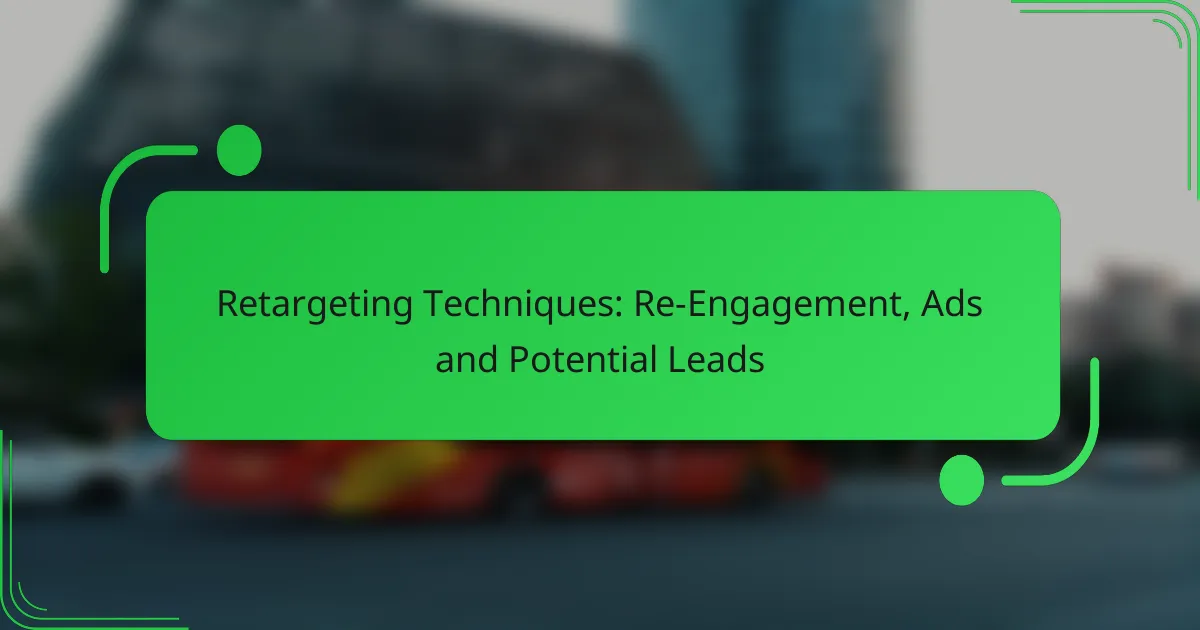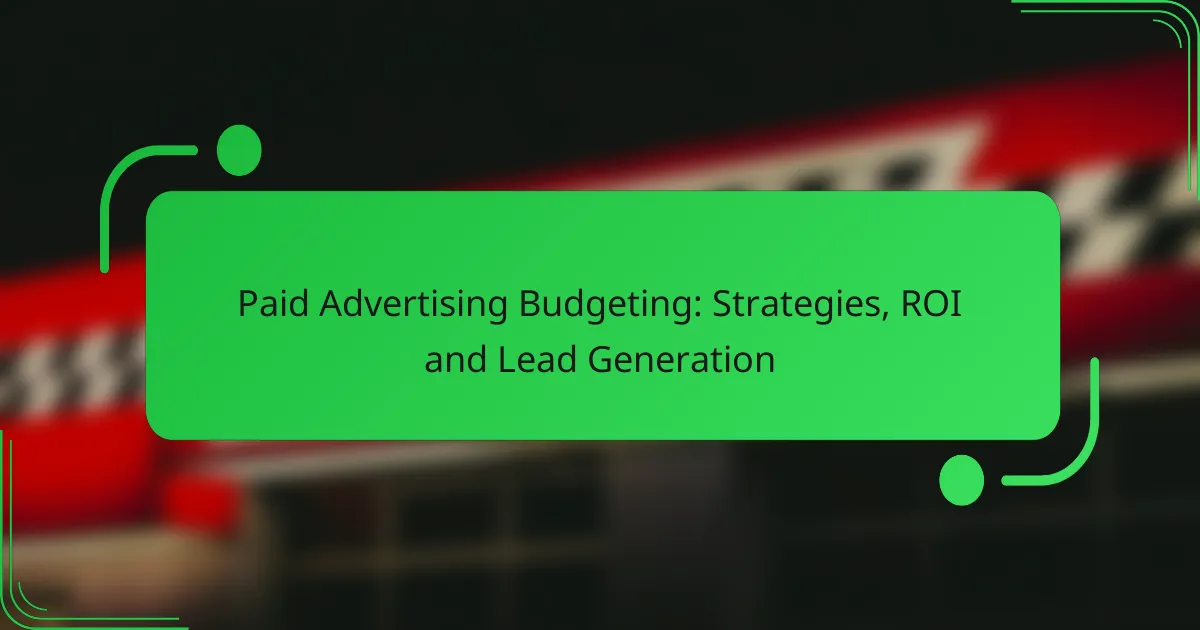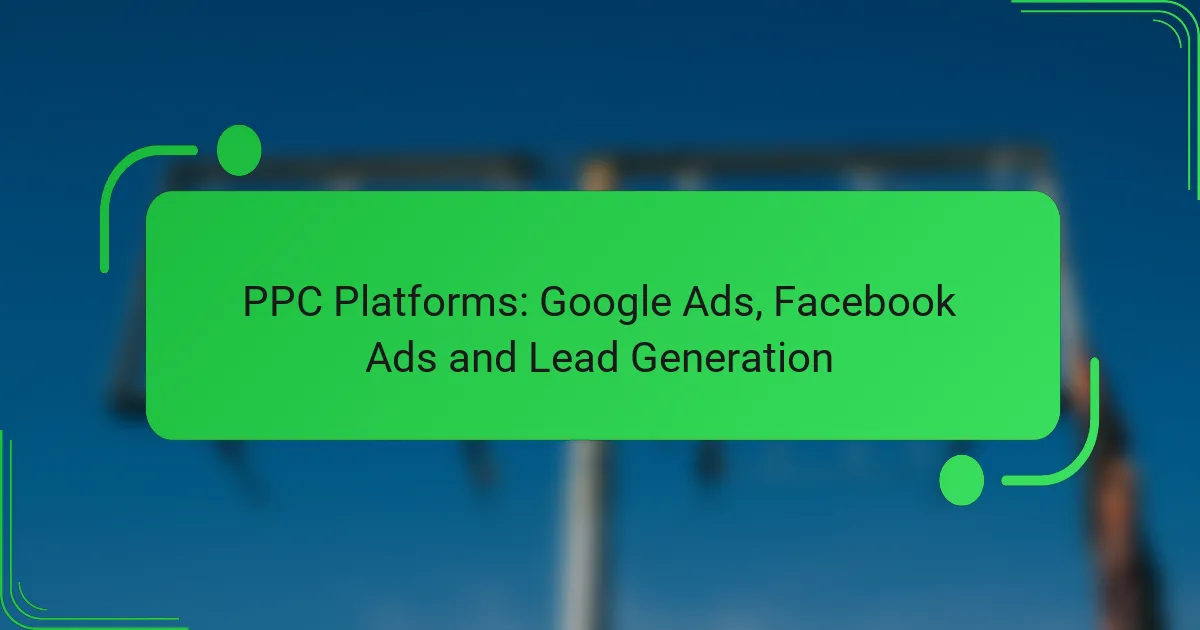Retargeting techniques are essential for re-engaging potential customers who have previously shown interest in your brand. By utilizing data insights, businesses can deliver personalized ads that remind users of products or services they considered, encouraging them to complete their purchases. Major platforms like Google Ads and Facebook Ads facilitate these efforts, providing unique features to enhance customer engagement and drive conversions.
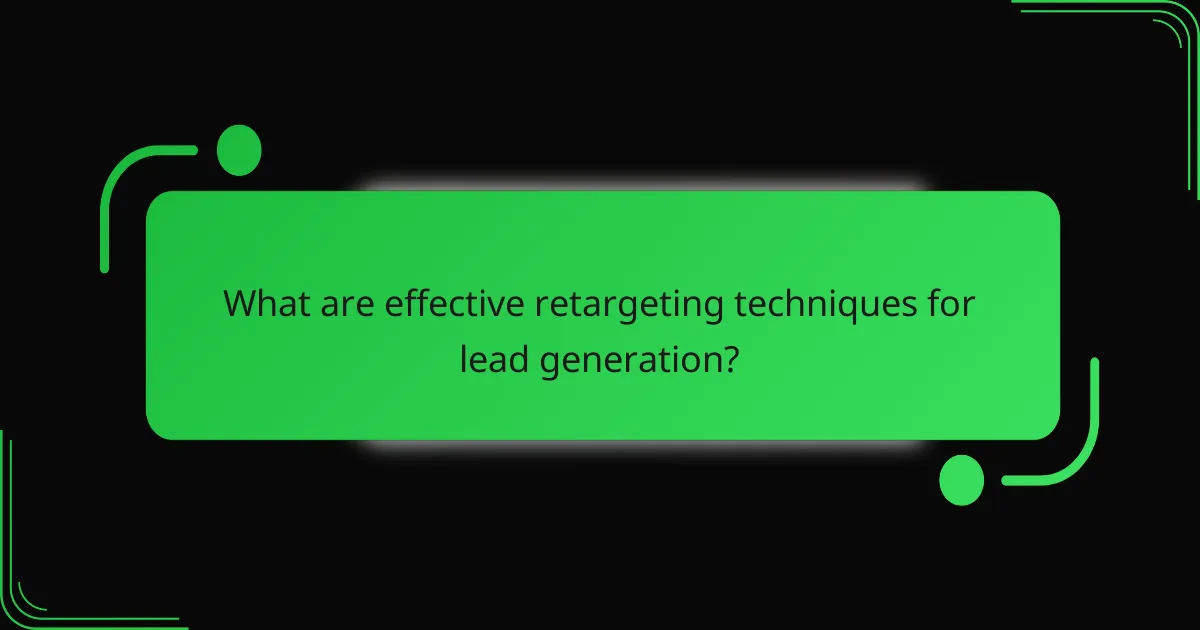
What are effective retargeting techniques for lead generation?
Effective retargeting techniques for lead generation focus on re-engaging potential customers who have previously interacted with your brand. These methods leverage data insights to deliver personalized content, ultimately encouraging users to complete their purchase or sign up for services.
Dynamic product ads
Dynamic product ads automatically showcase products that users have previously viewed on your website. By displaying these items across various platforms, you can remind potential customers of their interest and encourage them to return. This technique is particularly effective in e-commerce, where visual appeal can drive conversions.
To implement dynamic ads, ensure your product catalog is up-to-date and linked to your advertising accounts. Consider segmenting your audience based on their browsing behavior to tailor the ads more effectively.
Sequential retargeting
Sequential retargeting involves showing different ads to users based on their previous interactions with your brand. This method allows you to guide potential leads through a narrative, gradually increasing their engagement. For instance, a user who viewed a product might first see an ad highlighting its benefits, followed by customer testimonials.
To execute this strategy, map out a user journey and create a series of ads that align with each stage. Monitor performance to adjust the sequence as needed, ensuring that each ad resonates with the target audience.
Personalized email campaigns
Personalized email campaigns can effectively re-engage leads by delivering tailored content directly to their inbox. By segmenting your email list based on user behavior, you can send targeted messages that address specific interests or concerns. For example, if a user abandoned their shopping cart, a follow-up email with a discount could entice them to complete their purchase.
When crafting these emails, use engaging subject lines and clear calls to action. A/B testing different approaches can help identify what resonates best with your audience.
Social media remarketing
Social media remarketing allows you to target users who have interacted with your brand on platforms like Facebook, Instagram, or LinkedIn. By creating custom audiences based on website visits or engagement, you can serve ads that remind users of your offerings. This technique is effective in maintaining brand visibility and encouraging further exploration of your products or services.
To maximize impact, use eye-catching visuals and concise messaging. Regularly refresh your ad content to prevent audience fatigue and keep your brand top-of-mind.
Display ads with tailored messaging
Display ads with tailored messaging can capture the attention of users who have previously visited your site. By customizing the ad content to reflect the user’s interests, you increase the likelihood of engagement. For example, if a user browsed outdoor gear, displaying ads featuring those products can reignite their interest.
Utilize retargeting platforms to manage your display ads effectively. Monitor performance metrics to refine your messaging and ensure that it aligns with user preferences, ultimately driving higher conversion rates.
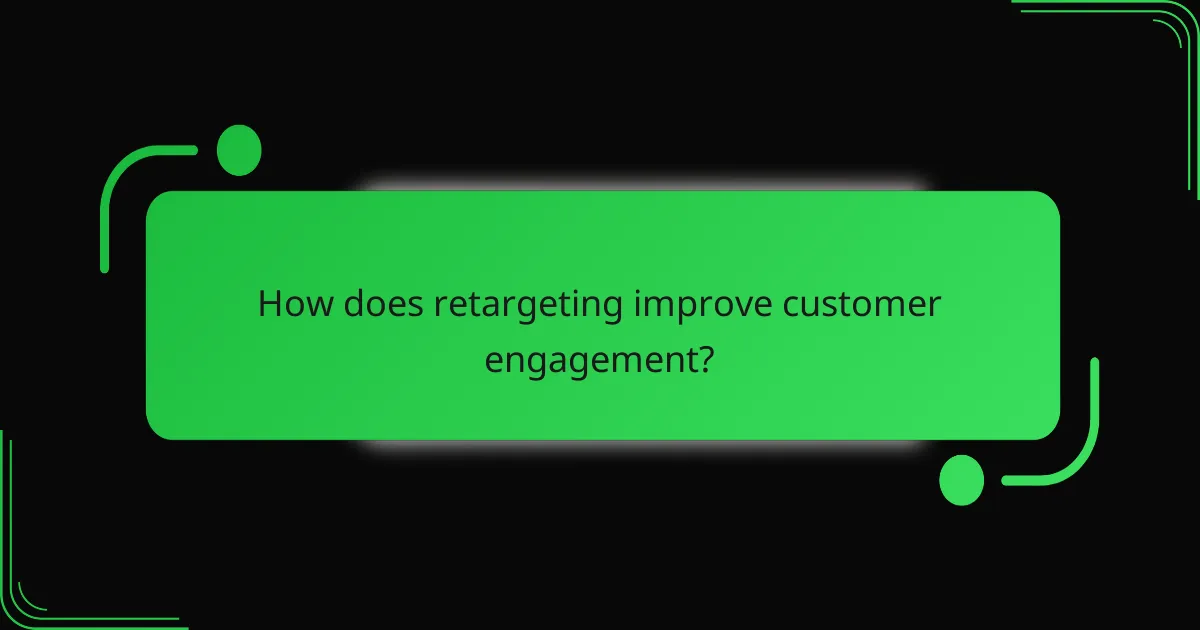
How does retargeting improve customer engagement?
Retargeting enhances customer engagement by reminding potential buyers of products or services they previously showed interest in. This technique keeps your brand top-of-mind, encouraging users to return and complete their purchases.
Increased brand recall
Retargeting ads serve as reminders, reinforcing brand recognition among users who have interacted with your website or app. By displaying familiar products or services, these ads help maintain a connection between the customer and the brand.
For example, if a user visits an online store but leaves without purchasing, seeing ads for those specific items on social media or other websites can prompt them to return. This consistent visibility can significantly boost brand recall over time.
Higher conversion rates
Retargeting campaigns often lead to higher conversion rates compared to standard ads. Since these ads target users who have already expressed interest, they are more likely to result in sales.
Research suggests that retargeting can increase conversion rates by a notable margin, often in the range of 10-50%. Businesses should focus on crafting compelling ad copy and visuals to maximize this potential.
Enhanced customer journey
Retargeting improves the customer journey by providing personalized experiences based on previous interactions. This tailored approach helps guide users through the sales funnel more effectively.
For instance, if a customer abandons their shopping cart, retargeting ads can remind them of the items left behind, possibly offering a discount to incentivize completion. This strategy not only boosts sales but also fosters a sense of customer care and engagement.
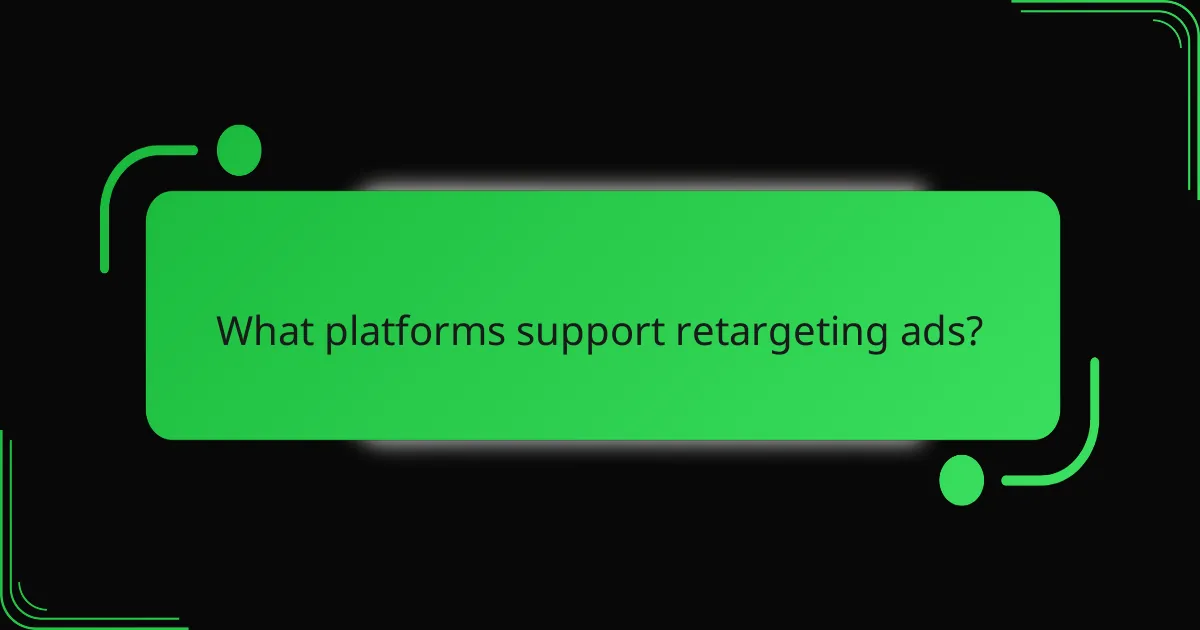
What platforms support retargeting ads?
Several major platforms support retargeting ads, allowing businesses to re-engage potential customers who have previously interacted with their brand. These platforms include Google Ads, Facebook Ads, LinkedIn Ads, and Twitter Ads, each offering unique features and targeting options.
Google Ads
Google Ads enables retargeting through its Display Network and Search Network. Advertisers can create customized ads that appear to users who have visited their website or engaged with their content. This platform allows for granular targeting based on user behavior, demographics, and interests.
To effectively use Google Ads for retargeting, consider segmenting your audience based on their previous interactions, such as page views or cart abandonment. This targeted approach can significantly increase conversion rates by delivering relevant ads to users at the right time.
Facebook Ads
Facebook Ads offers robust retargeting capabilities through Custom Audiences, allowing advertisers to reach users who have previously engaged with their brand on Facebook or Instagram. This platform supports various ad formats, including image, video, and carousel ads, enhancing engagement potential.
Utilize Facebook’s pixel to track user interactions on your website and create tailored ads for specific audience segments. Regularly refresh your ad creatives to avoid ad fatigue and maintain user interest.
LinkedIn Ads
LinkedIn Ads provides retargeting options primarily for B2B marketers, enabling them to reconnect with professionals who have visited their company page or engaged with their content. This platform is particularly effective for targeting decision-makers and industry professionals.
To maximize LinkedIn retargeting, focus on creating ads that resonate with your audience’s professional interests and pain points. Sponsored Content and InMail can be particularly effective formats for re-engagement.
Twitter Ads
Twitter Ads supports retargeting through tailored audiences, allowing advertisers to reach users who have interacted with their tweets or visited their website. This platform is ideal for brands looking to engage users in real-time conversations and trending topics.
To enhance your Twitter retargeting efforts, consider using engaging visuals and concise messaging that encourages immediate action. Monitor engagement metrics to refine your strategy and improve ad performance over time.
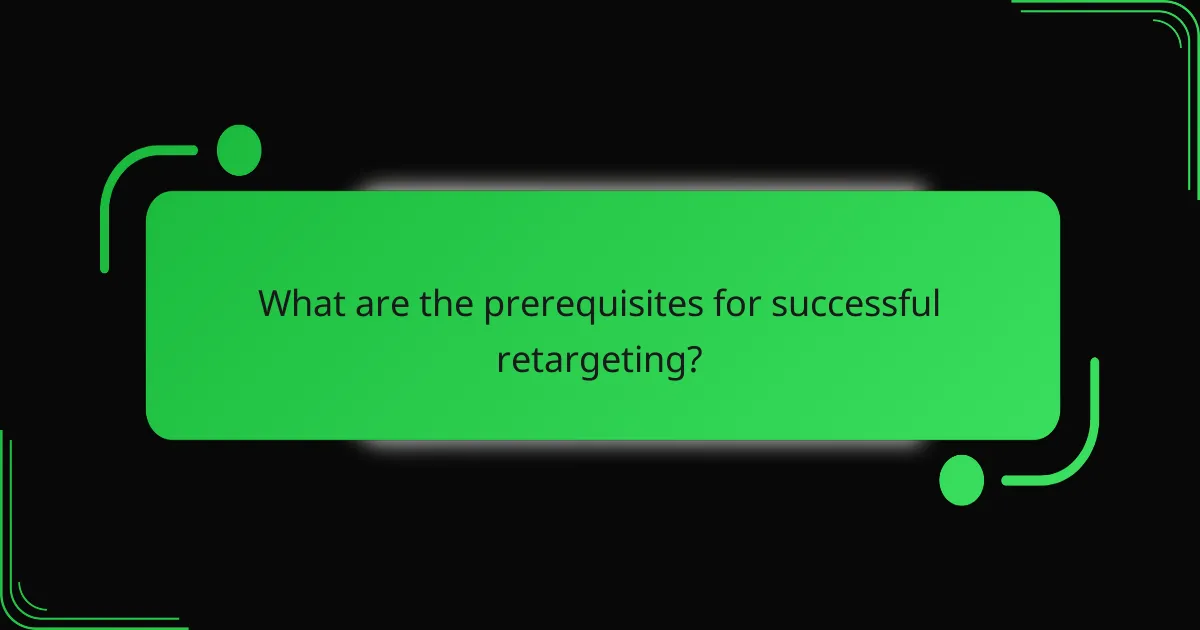
What are the prerequisites for successful retargeting?
Successful retargeting requires specific foundational elements to effectively re-engage potential leads. Key prerequisites include proper website pixel installation, audience segmentation, and clearly defined campaign objectives.
Website pixel installation
Website pixel installation is crucial for tracking user behavior on your site. A pixel is a small piece of code that collects data on visitors, allowing you to serve targeted ads to them later. Ensure that the pixel is correctly placed on all relevant pages to capture comprehensive data.
For example, if you run an e-commerce site, install pixels on product pages, the shopping cart, and the checkout page. This way, you can retarget users who viewed specific products or abandoned their carts.
Audience segmentation
Audience segmentation involves dividing your audience into distinct groups based on their behavior or demographics. This allows for more personalized and effective retargeting campaigns. Consider segmenting users who visited your site in the last 30 days versus those who visited six months ago.
Common segments include cart abandoners, product viewers, and past purchasers. Tailor your messaging for each group to increase engagement and conversion rates, such as offering discounts to cart abandoners to encourage purchase completion.
Clear campaign objectives
Establishing clear campaign objectives is essential for measuring the success of your retargeting efforts. Define what you want to achieve, whether it’s increasing sales, boosting website traffic, or enhancing brand awareness. Specific goals help guide your strategy and tactics.
For instance, if your objective is to recover lost sales, focus on retargeting ads that remind users of the products they viewed. Use metrics like click-through rates and conversion rates to assess the effectiveness of your campaigns and adjust as needed.
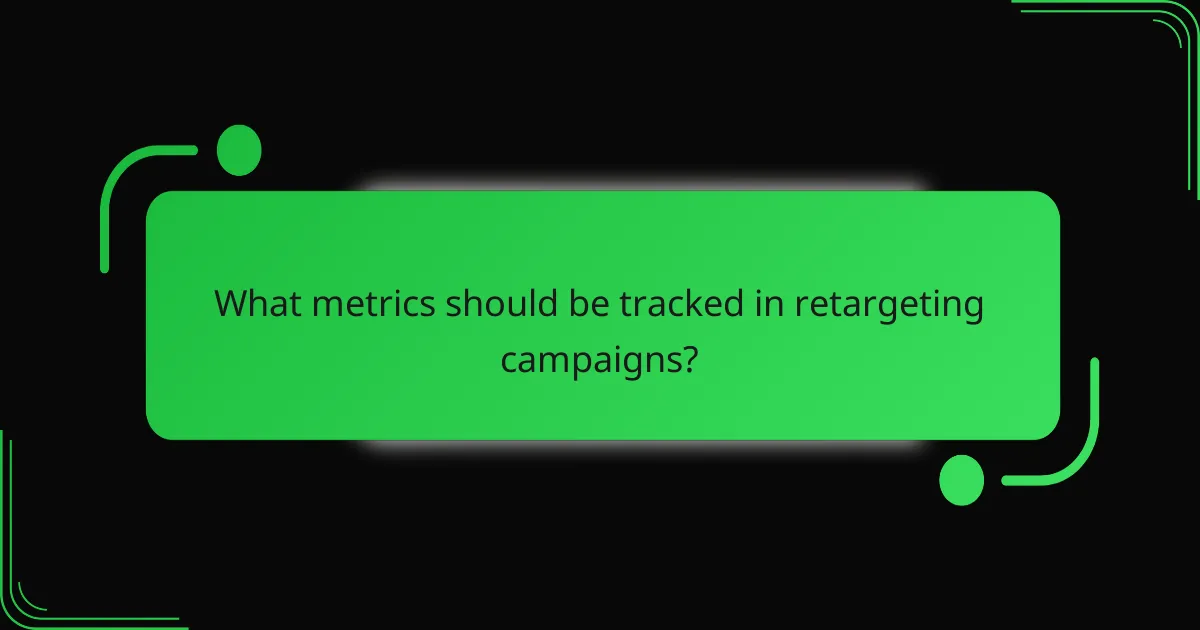
What metrics should be tracked in retargeting campaigns?
Tracking the right metrics in retargeting campaigns is crucial for measuring their effectiveness and optimizing performance. Key metrics provide insights into user engagement, conversion rates, and overall campaign success, allowing marketers to make informed decisions.
Click-through rate
Click-through rate (CTR) measures the percentage of users who click on a retargeting ad compared to the total number of users who viewed it. A higher CTR indicates that the ad is resonating with the audience and effectively encouraging them to engage further.
To calculate CTR, divide the number of clicks by the number of impressions and multiply by 100. For example, if an ad received 100 clicks from 10,000 impressions, the CTR would be 1%. Generally, a CTR of 1-3% is considered average for display ads, while retargeted ads often see higher rates due to their targeted nature.
To improve CTR, focus on creating compelling ad copy and visuals that capture attention. Avoid overly generic messaging and instead tailor your ads based on user behavior and preferences. Regularly test different variations to identify what resonates best with your audience.
